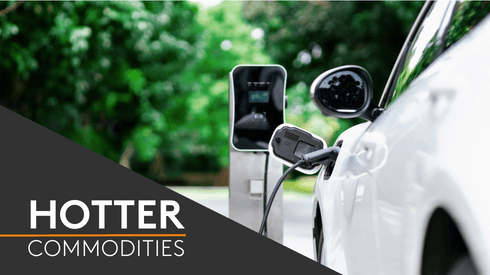The transition to a more sustainable supply chain is a priority for most industries.
Metals are key to facilitating this transition due to their use in key technologies such as electric vehicles (EVs), energy storage solutions and charging infrastructures – all of which need copper.
More and more businesses are developing a consciousness around their effect on climate change, carbon emissions and sustainability at the same time that their consumers are wanting to know more about the environmental impact of the copper they use.
During a recent Fastmarkets copper seminar, speakers discussed the transition to responsible copper production with Andrea Hotter, Fastmarkets’ special correspondent, who moderated a panel featuring industry experts:
- Michèle Brülhart from the Copper Mark
- Georgina Hallett from the LME
- Aaron Puna from Anglo American Chile
- Anna Krutikov from Glencore
Read on for highlights of that discussion.
The conversation around responsible production in the metals and mining industry is not new. Questions around social responsibility in copper have been a key topic for years, with the copper industry previously focused on child labor, human rights and conflict minerals. Now, however, environmental and climate change issues are the main market focus.
With sustainability becoming a bigger priority, the questions from concerned market participants – and observers – are becoming more nuanced. For example, it is no longer considered good enough to just recycle a product after use, that recycling process now has to be low-carbon and sustainable.
Stakeholders want to know the risks and to understand how the risks can be mitigated and communicated.
For miners and producers, the questions are about the standards they are aiming for. What will the impact be on operations and profit? Are consumer expectations in line with producer expectations? How can you spread the cost of producing green copper along the value chain?
The industry recognizes that low-carbon, or ‘green copper,’ is a necessary industry development but there is a lack of agreement on what those industry standards should be. The priorities of each market participant are also liable to change depending on factors including region, geography and politics.
Looking for answers
How the copper industry approaches sustainability and green issues is evolving, evident in the fact it is looking to establish a more sophisticated understanding of the issues.
There is a need to establish guidelines, frameworks and/or assurance reviews in the copper industry. There is growing market demand for a common standard that guides how companies talk about and report on sustainability so that market participants know what to expect for their products. This would also help the industry to meet the sustainability challenges it faces.
Several initiatives are currently underway to address this.
The Organisation for Economic Co-operation and Development (OECD) provides due diligence guidance for companies sourcing materials from conflict-affected and high-risk areas.
The London Metal Exchange is moving ahead with the LMEpassport – a platform where companies can submit their carbon credentials and other value-added information. A key step to providing transparency in the metals sector.
The Copper Mark has put together an assurance process – an independent assessment for responsible copper production – as part of an aim to create a standard that all stakeholders can recognize.
Going green
Metals such as copper are the key to a green future.
The scope of what responsible copper production looks like has expanded. There is a link between environmental and social concerns, therefore, an integrated approach can cover both.
The copper market will continue to change and so too will the priorities of the industry. Market participants will need to agree on what sustainable copper production is while industry collaboration is needed to establish definitions, standards and guidance.
These steps should also allow the industry itself to continue adapting to changing priorities.






